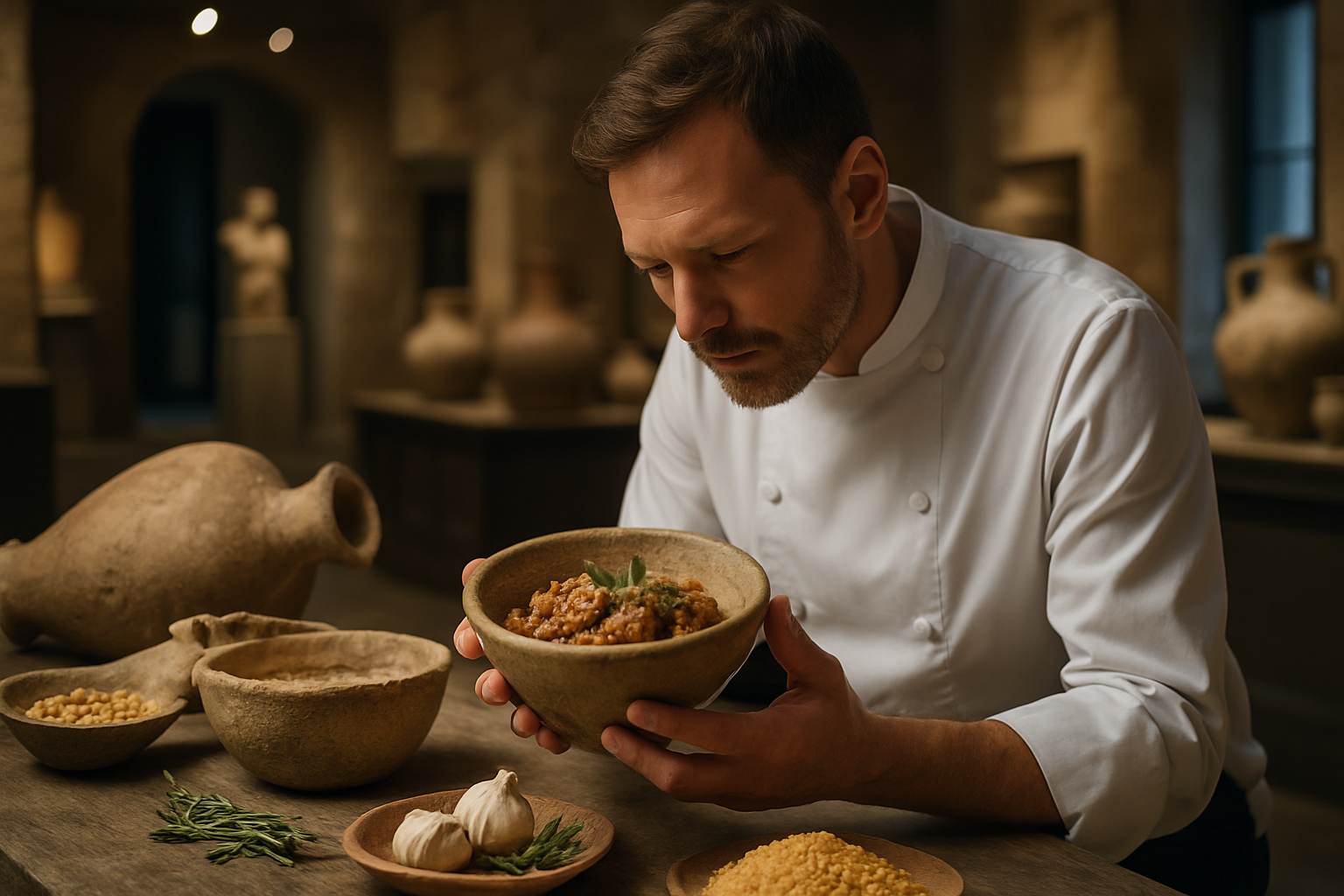Foraging Fusion: Urban Wild Edibles Meet Gourmet Cuisine
Discover the hidden culinary treasures growing in your city's green spaces. Urban foraging is revolutionizing the way we think about local, sustainable eating. This emerging trend combines the thrill of the hunt with gourmet cooking techniques, creating unique dishes that showcase nature's bounty in unexpected ways. Join us as we explore the exciting world of urban foraging and learn how to transform wild ingredients into sophisticated meals.

Identifying Safe Urban Edibles
Before embarking on your urban foraging adventure, it’s crucial to develop a solid understanding of plant identification. Safety is paramount when foraging, as consuming the wrong plant can lead to serious health consequences. Start by familiarizing yourself with common edible plants in your area through field guides, local foraging classes, or plant identification apps. Look for easily recognizable species like dandelions, chickweed, and wild berries. Always avoid foraging near roads, industrial areas, or places where pesticides might be used. It’s also essential to respect local regulations and only forage in areas where it’s permitted. Remember, when in doubt, don’t pick it out. Building your knowledge gradually and safely is key to successful urban foraging.
From Sidewalk to Table: Cleaning and Preparing Foraged Foods
Once you’ve gathered your urban harvest, proper cleaning and preparation are essential to ensure both safety and optimal flavor. Begin by gently rinsing your foraged items in cool water to remove any dirt, debris, or small insects. For leafy greens, a soak in vinegar water can help eliminate any lingering contaminants. Inspect each item carefully, discarding any damaged or discolored parts. Many wild edibles have a more intense flavor than their cultivated counterparts, so consider blanching them briefly to mellow any bitterness. Experiment with different preparation methods – wild greens can be sautéed, added to soups, or used raw in salads, while berries and flowers might find their way into desserts or cocktails. Remember, the key is to let the unique characteristics of each foraged ingredient shine through in your culinary creations.
Gourmet Techniques for Wild Ingredients
Elevating foraged ingredients from simple finds to gourmet delights requires creativity and culinary skill. Start by considering the flavor profile of each wild edible and how it might complement or contrast with other ingredients. For instance, the peppery bite of wild watercress can be balanced with creamy goat cheese in a sophisticated tart. Experiment with modernist cooking techniques like fermentation to transform foraged herbs into unique condiments, or use molecular gastronomy to create wild berry caviar. Infusions are another excellent way to capture the essence of foraged flowers or herbs in oils, vinegars, or spirits. Don’t be afraid to combine wild ingredients with luxury items – a risotto studded with foraged morels and drizzled with truffle oil can be a showstopping dish that bridges the gap between rustic and refined cuisine.
Seasonal Foraging and Menu Planning
Embracing urban foraging means aligning your culinary calendar with nature’s rhythms. Each season brings a new array of edible plants, challenging chefs and home cooks to constantly innovate their menus. Spring might offer tender shoots and wild garlic, perfect for light, vibrant dishes. Summer’s bounty of berries and edible flowers can inspire colorful desserts and refreshing beverages. Fall brings nuts and late-season fruits, ideal for hearty, comforting meals. Even winter has its offerings, with hardy greens and preserved foraged items taking center stage. By planning your menus around what’s available in your urban environment, you not only ensure the freshest ingredients but also create a deeper connection to the natural world around you. This approach to seasonal eating can lead to more diverse, nutritious, and exciting meals throughout the year.
Urban Foraging Safety Tips & Facts
• Always carry a reliable plant identification guide or use a trusted app.
• Forage only in areas free from pollution and pesticides.
• Harvest sustainably, taking only what you need and leaving plenty for wildlife.
• Wash all foraged items thoroughly before consumption.
• Be aware of local regulations regarding foraging in public spaces.
• Some common edible urban plants include dandelions, chickweed, and lamb’s quarters.
• Urban foraging can significantly reduce your carbon footprint by eliminating food transportation.
• Many foraged plants have higher nutritional content than their cultivated counterparts.
• Foraging can help control invasive species in urban environments.
• Joining a local foraging group can provide valuable knowledge and community connections.
Conclusion
Urban foraging fusion cuisine represents a exciting intersection of sustainability, culinary innovation, and reconnection with nature. By venturing into the green spaces of our cities with open eyes and adventurous palates, we unlock a world of flavors that have been hiding in plain sight. This trend not only challenges our perceptions of what constitutes “food” but also encourages a deeper appreciation for the ecosystems that thrive alongside us in urban environments. As we continue to explore the possibilities of urban foraging, we open doors to new gastronomic experiences, foster a stronger sense of community, and take meaningful steps towards a more sustainable food system. The next time you walk through your city, remember – your next gourmet meal might be growing right at your feet.





